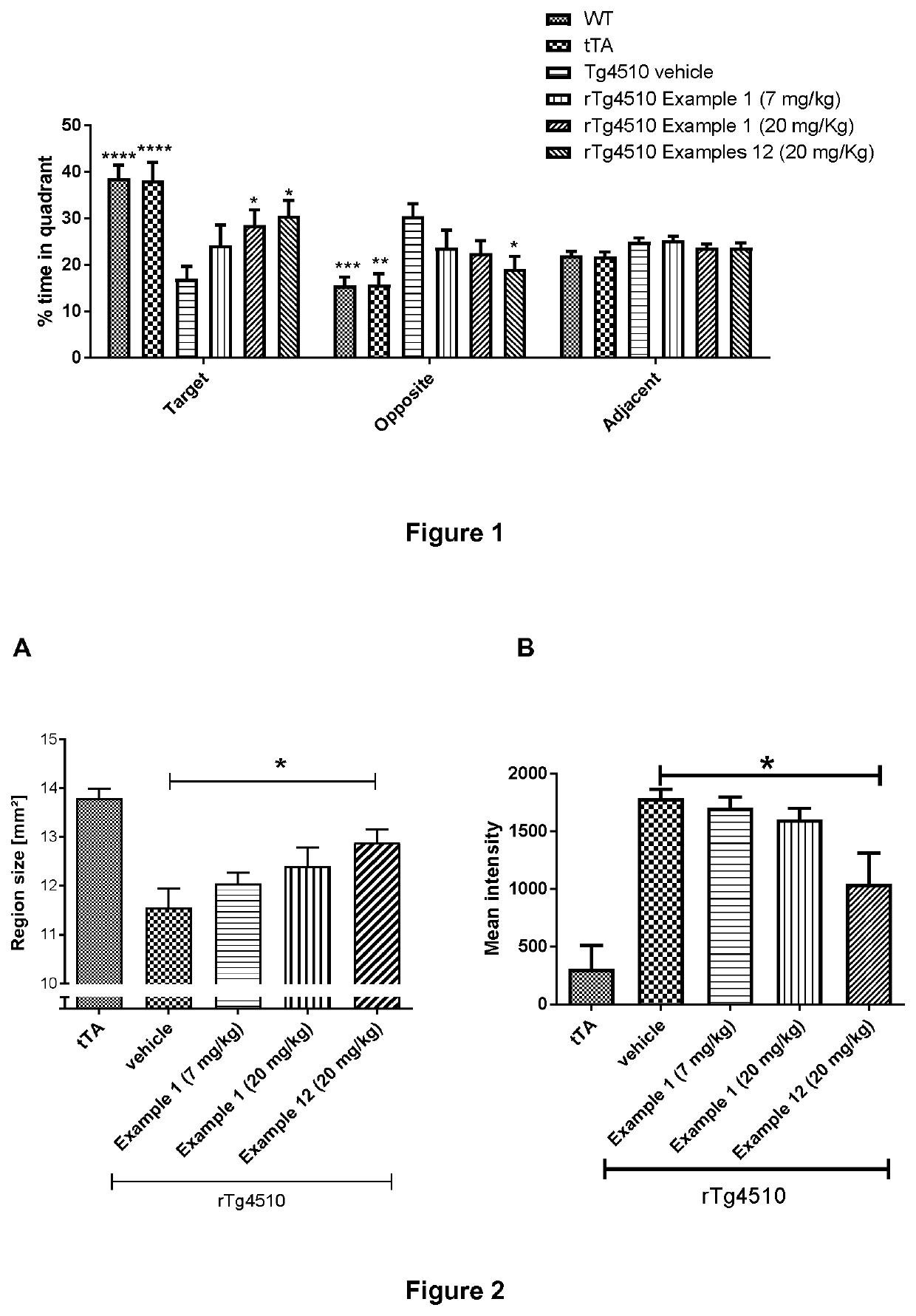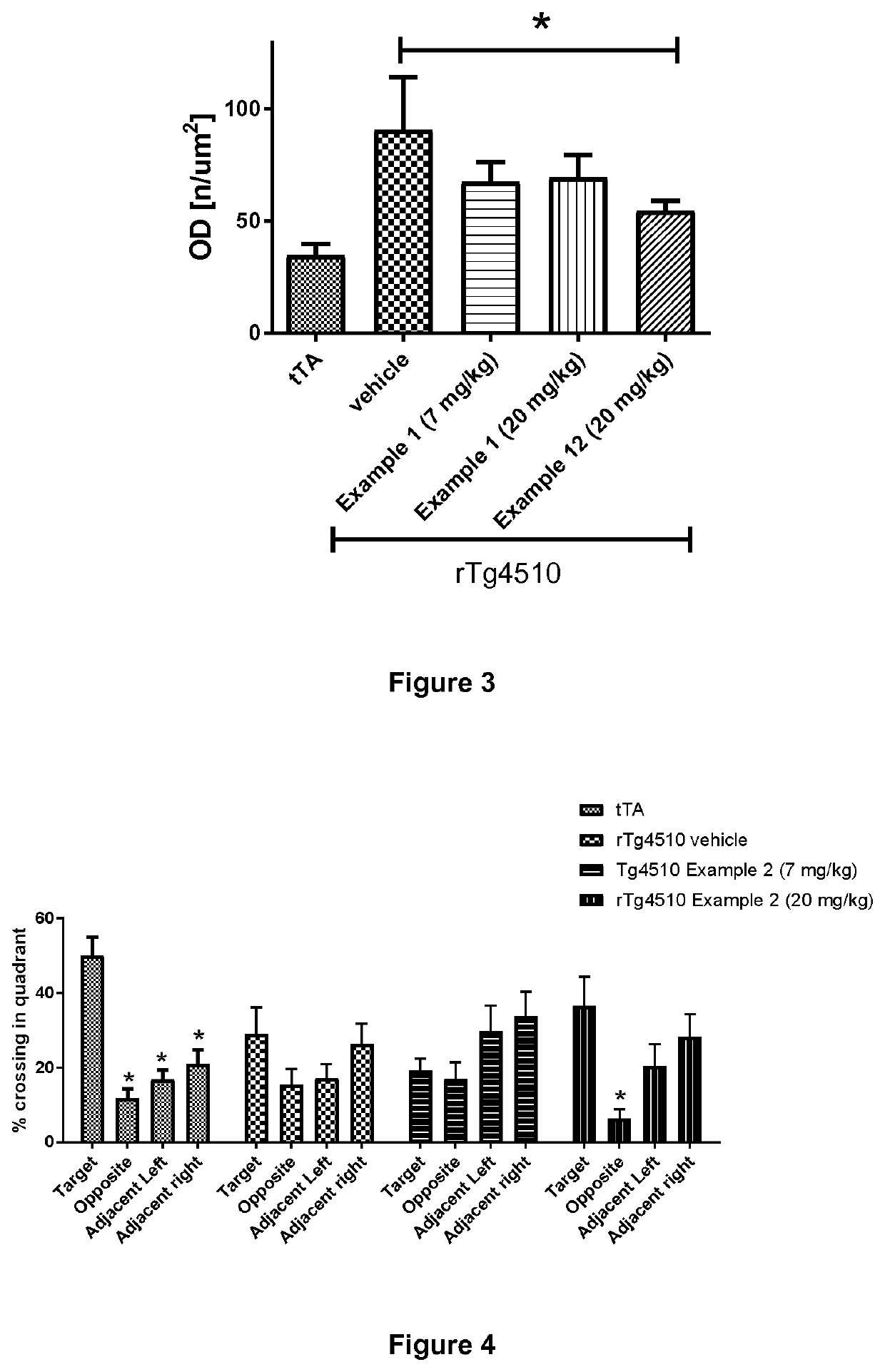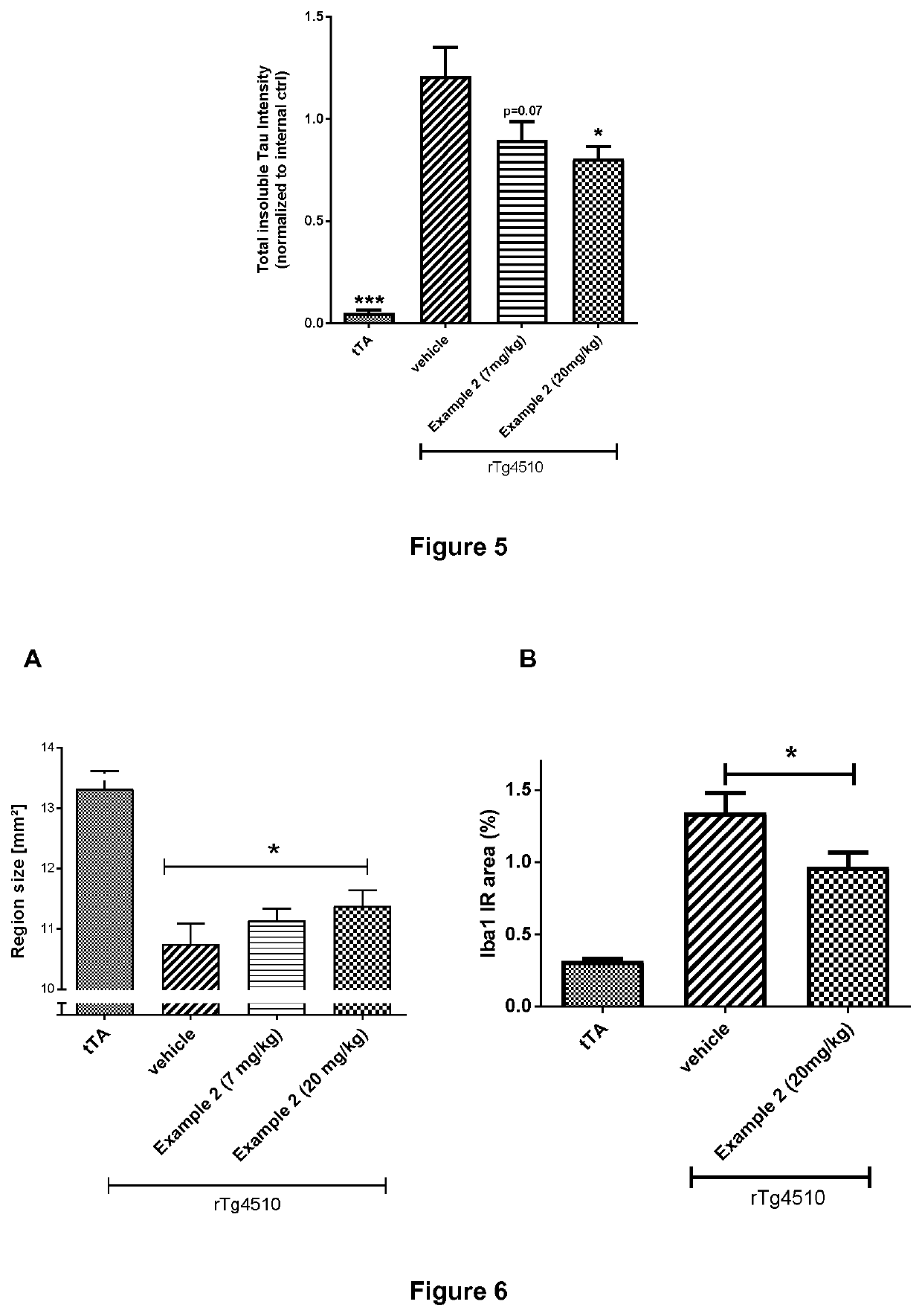Novel Compounds for the Treatment, Alleviation or Prevention of Disorders Associated with Tau Aggregates
- Summary
- Abstract
- Description
- Claims
- Application Information
AI Technical Summary
Benefits of technology
Problems solved by technology
Method used
Image
Examples
example 6
Preparative Example 6
[0184]
Step A
[0185]To a suspension of commercially available 2,6-dibromopyridine (10 g, 42.2 mmol) in ethanol (50 mL) was added commercially available N-methylhydrazine (11.11 mL, 211 mmol). The mixture was heated at 80° C. (reaction mixture temperature) for 6 h. The reaction mixture was concentrated to dryness and the residue was extracted with dichloromethane (200 mL) and the organic phase washed with water and brine. The organic phase was separated, dried over Na2SO4 and the solvent removed under reduced pressure to as reddish oil which becomes a solid by standing at room temperature (8.2 g, 97%).
[0186]MS: 204.2 (M+2H)+.
Step B
[0187]A suspension of commercially available 1,4-dioxaspiro[4.5]decan-8-one (30 g, 192.3 mmol) in THF (30 mL), dimethylamine in THF (195 mL) was slowly added. After the addition reaction mixture was cooled to 0° C., Titanium (IV) isopropoxide (84 mL, 288.45 mmol) was added drop by drop and stirred at room temperature for 4 h. Then reactio...
example 7
Preparative Example 7
[0196]
Step A
[0197]To a suspension of commercially available 2-bromo-6-fluoropyridine (20 g, 113 mmol) in ethanol (200 mL) was added commercially available N-methylhydrazine (36.6 mL, 568 mmol). The mixture was heated at 115° C. (reaction mixture temperature) for 6 h. The reaction mixture was concentrated to dryness to afford product as off white solid (18 g, 85%).
[0198]1H-NMR, (400 MHz, DMSO-d6) δ=7.87 (s, 1H), 7.32-7.36 (m, 1H), 6.64-6.65 (m, 2H).
[0199]MS: 189.9 (M+H)+.
Step B
[0200]A suspension of the title compound from Preparative Example 6 Step B (2.0 g, 10.79 mmol) and the title compound from Step A above (2.02 g, 10.79 mmol) in 1,4-dioxane (10 mL) was placed in an ice-bath. To the stirred suspension concentrated sulfuric acid (2 mL) was slowly added. After the addition was completed, the reaction mixture was heated in a microwave at 150° C. for 1 hour. The reaction mixture was cooled to room temperature, the dioxane layer was discarded, and ice-water (20 mL...
example 8
Preparative Example 8
[0203]
Step A
[0204]To a microwave tube were added the tricyclic bromide from the Preparative Example 6 (second eluting peak) (2 g, 6.4 mmol), and 30% NH3 solution (6 mL), Cu2O (0.003 g) and diethylene glycol (1 mL). The tube was sealed and heated at 140° C. for 3 hours using a Biotage Initiator microwave. The reaction mixture was poured in ethyl acetate (200 mL) and washed with water and brine. The organic phase was separated and dried over Na2SO4. The solvent was removed, residue triturated with n-heptane to afford the title compound as off white solid (0.953 g. 61%).
[0205]1H-NMR (400 MHz, Chloroform-d) δ=7.54 (d, J=8.2 Hz, 1H), 6.31 (d, J=8.2 Hz, 1H), 4.27 (s, 2H), 3.61 (s, 3H), 2.97-2.80 (m, 2H), 2.79-2.65 (m, 2H), 2.67-2.56 (m, 1H), 2.42 (s, 6H), 2.37-2.18 (m, 1H), 1.95 (d, J=12.8 Hz, 1H), 1.80 (qd, J=11.5, 5.7 Hz, 1H).
PUM
| Property | Measurement | Unit |
|---|---|---|
| Molar density | aaaaa | aaaaa |
| Fraction | aaaaa | aaaaa |
| Fraction | aaaaa | aaaaa |
Abstract
Description
Claims
Application Information
 Login to View More
Login to View More - R&D
- Intellectual Property
- Life Sciences
- Materials
- Tech Scout
- Unparalleled Data Quality
- Higher Quality Content
- 60% Fewer Hallucinations
Browse by: Latest US Patents, China's latest patents, Technical Efficacy Thesaurus, Application Domain, Technology Topic, Popular Technical Reports.
© 2025 PatSnap. All rights reserved.Legal|Privacy policy|Modern Slavery Act Transparency Statement|Sitemap|About US| Contact US: help@patsnap.com



